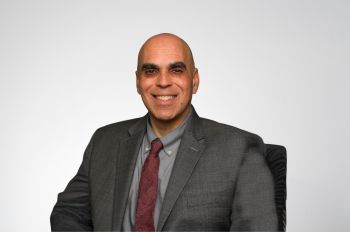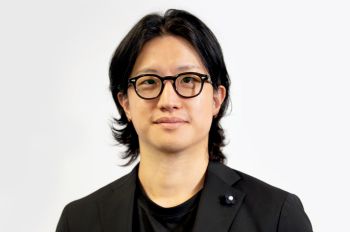Armour College Undergraduate Students Awarded Spring 2015 Armour R&D Fellowships
Nineteen Armour College of Engineering undergraduate students and their faculty mentors have been awarded Spring 2015 Armour R&D Fellowships. The program offers undergraduate engineering students the opportunity to gain research and development experience.
Armour R&D is an Armour College of Engineering Distinctive Education initiative that includes the Program for Undergraduate Research Education (PURE) and Mentored INovation and Development (MIND). Students selected to participate in PURE will have an opportunity to team with an IIT Faculty mentor on an engineering research project and gain valuable research experience. Those selected under the MIND program will develop technology based on research findings. Students will explore new applications of ongoing research and/or work towards the utilization of innovative technology.
Eleven of the students funded this semester are new to the program, while eight students were funded to continue working on projects started in prior semesters of Armour R&D. Students have been selected to participate in the program based on merit.
Armour R&D will run for 10 weeks, culminating in the 2015 Annual Armour R&D Expo to be held on April 15, 2015 in the atrium of the Engineering 1 Building. During the Expo, students from the Spring 2015, Fall 2014, and Summer 2014 semesters will participate in a poster competition where they will share the results of their work and compete for awards.
The Spring 2015 Armour R&D projects are categorized under the four IIT Engineering Themes: Water, Health, Energy, and Security. These themes represent the areas in which engineers can generate solutions of global impact that advance society.
Water
Sara Glade (CE/EE, 5th year) and Professor of Environmental Engineering, Krishna Pagilla, will expand on work from two previous semesters in Armour R&D for their PURE project, Unintended Consequences of Adding Chemicals in Water Treatment in Chicago. The team will analyze what chemicals are added or removed based on data from the Chicago Department of Water Management. The purpose of the proposed research is to analyze the unintended consequences of adding different chemicals within the water treatment process, and the associated environmental, health, and economic associations of these chemicals.
Health
Isabel Arias (BME, 2nd year) and Professor of Biomedical Engineering, Eric Brey, will continue the PURE project they have worked on during the Summer 2013 and Spring 2014 semesters, Role of Growth Media Conditions on the Mineralization of Vascularized Scaffolds for Bone Tissue Engineering. The team will proceed by performing a more sophisticated analysis of engineered tissues to determine which media combination yields the most vasculature and bone formation and they will learn about the optimal environment for bone graft vascularization in vitro. The goal of the research is to engineer vascularized bone grafts for patients who have suffered trauma, congenital defects, or cancer.
Szu-Chun Chen (BME/ChE, 3rd year) and Associate Professor of Biomedical Engineering, Georgia Papavasiliou will continue work that began during the Fall 2014 semester for their PURE project Effects of Angiogenic Peptide Loaded Nanoparticle on Scaffold Neovascularization. The team will work to determine the effects of sustained release of angiogenic peptide loaded nanoparticles on scaffold neovascularization in vitro. The goal is to improve the construction of biomaterial scaffolds used for tissue engineering.
Nicole Frantz (BME, 3rd year) and Professor of Chemical Engineering and Director of the Engineering Center for Diabetes Research and Education, Ali Cinar, will continue work they started in the Fall 2014 semester for their PURE project The Effects of Exercise on Blood Glucose Concentrations. The goal of the project is to better understand the effects of exercise on the variations in blood glucose concentrations. This will allow the team to develop artificial control algorithms that automatically adjust insulin infusion rates as a patient with Type 1 diabetes begins to exercise.
Elliot Osorio (BME/ChE, 4th year) and Professor of Biomedical Engineering, David Mogul, will start work on their PURE project Precise Localization of Transcranial Magnetic Stimulation Coil Relative to Subject Anatomy for the Treatment of Depression. The team’s objective is to improve targeting in transcranial magnetic systems (TMS) by developing a system to track the relative locations of the TMS and subject’s head. This research will lead to TMS treatment protocols that are customized to individual patients. This individual customization can lead more effective TMS treatments for those suffering from depression.
Energy
Junhuan Ding (ChE, 4th year) and S.C. Johnson Professor of Chemical Engineering and Director of the Center for Complex Systems and Dynamics, Fouad Teymour, will begin work on their PURE project Development of an Autocatalystic Alternative to the Lotka-Volterra Predator-Prey Model. The team’s objective is to develop a mathematical model that describes the interaction of a predator and an autocatalytic replicator in a finite environment with finite resources, and then develop modules for computer programs in order to simulate this model under dynamic and steady state conditions. This research will lead to the development of educational modules that can be plugged into a larger simulation environment that includes other variants of autocatalators.
Qimei Huang (ChE, 2nd year) and Professor of Chemical Engineering, Satish Parulkar, will start work on their PURE project Steady State and Dynamic Reactor operation for Autocatalytic Reactions. The objective of this project is to study the performance of autocatalytic reactions in well-mixed reactors in steady state and unsteady states in order to develop design diagrams that allow easy determination of the number and identity of physically realizable steady states. This research will lead to the generation of a variety of commercially important products at a consistent quality.
Bader Jarai (ChE, 3rd year), S.C. Johnson Professor of Chemical Engineering and Director of the Center for Complex Systems and Dynamics, Fouad Teymour and Part-time Faculty, Omar Khalil, will begin work on their PURE project Development of a Method of Quantitative Fractionation of Algae Bio Composites. The objective of this project is to find the most effective conditions for separating filamentous bacteria from Braunii algae by determining the nature of the binding forces between algae and the bacteria. With this information the team hopes to eliminate the difficulty of separation and recovery of the algal biomass, a major obstacle that stands in the face of commercialization of algal biofuel processes.
Huilen Quiroga (MechE, 4th year) and Assistant Professor of Mechanical Materials and Aerospace Engineering, Carrie Hall, will continue the PURE project they began during the Fall 2014 semester, Analysis of the Combustion Timing in Homogeneous Charge Compression Ignition Engines. The team will study how variables such as intake temperature, exhaust gas recirculation and the compression ratio affect the combustion timing of the Homogeneous Charge Compression Ignition (HCCI) engine by further analyzing a computer simulated model. The goal of this project is to increase the efficiency of HCCI engines by better controlling the combustion timing. HCCI engines could reduce fuel consumption and reduce the amount of nitrogen oxides and other pollutants emitted if they become efficient enough to replace traditional engines.
Adam Sumner (CompE, 3rd year) and Associate Professor of Electrical and Computer Engineering, Alex Flueck, will continue work on a project started by a previous Armour R&D participant for their PURE project Faster Than Real-TIme Power System Dynamic Simulation. The team will develop high performance computer modeling and simulation software that predicts the effects of disturbances in power systems faster than real-time. The goal of the project is to allow operators to respond before the full effects of a cascading outage are realized, thereby avoiding widespread blackouts
Security
Georgi Hristov (AE, 5th year) and Professor of Mechanical & Aerospace Engineering and Director of the Fluid Dynamics Research Center, David Williams, will continue the PURE project they worked on during Summer and Fall 2014 semesters, Innovative Control Effectors for Maneuvering of Air Vehicles. The team will acquire, analyze, and process data relevant to the Circulation Control and its applications to the maneuverability of aircraft. The goal is to enhance aircraft aerodynamic performance, control, and maneuverability.
Mustafa Kabukcu (CompE, 4th year) and Associate Professor of Electrical and Computer Engineering, Erdal Oruklu, will begin work on their PURE project Structural Health Monitoring Using Acoustic Emission Sensors. By utilizing acoustic emission sensors placed on infrastructure such as bridges, the team hopes to develop an automated structural health monitoring system that would detect stress zones or cracks in the materials. The team hopes to improve the safety of infrastructure by increasing the reliability of inspections and lowering the cost of maintenance.
Esdras Vitor Silva Pinto (EE, visiting) and Associate Professor of Electrical and Computer Engineering, Erdal Oruklu, will begin work on their PURE project Real-Time Traffic Sign Recognition for Advanced Driver Assistance Systems. For the project, the team will work to develop an algorithm that can successfully detect and identify street signs so they can develop a traffic sign recognition system for vehicles. A system like this could be utilized to increase the safety of cars today and autonomous vehicles in the future.
Hang Yin (EE, 4th year) and Assistant Professor of Electrical and Computer Engineering, Joohee Kim, will begin work on their MIND project A Vision-Based Vehicular Distance Measurements System. The research objective is to implement an effective and accurate vision-based vehicle distance measurement system that will detect vehicles with different shapes, colors, sizes and poses, under various conditions in an outdoor environment. The team hopes to improve the safety of human operated vehicles on the road today and autonomous vehicles of the future.
Energy / Security
Daniel Burke (CE, 4th year) and Assistant Professor of Civil and Architectural Engineering, Mehdi Modares, will begin work on their PURE project, Sensor-Based Structural Measurements of and Existing Wind Turbine. For the project, structural measurements of the wind turbine installed at Argonne National Lab will be performed by placing sensors, such as acoustic emission sensors, on spots that are prone to anomalies such as internal cracking. The sensors will record vibrations of the structure at different times due to various wind loads. Through this research the team aims to develop a cost-effective monitoring tool that will increase the safety and reliability of wind turbines.
Hanyue Li (EE, 3rd year), Yifan Li ( EE, 4th year), Shihan Tian (EE, 4th year) and Associate Professor of Mechanical and Aerospace Engineering, Francisco Ruiz, will begin work on their PURE project, Simulation and Experiment of a Hybrid Battery Thermal Management System Using Phase Change Materials and Natural Air-Cooling. The team hopes to develop better cooling systems for lithium ion batteries used in cars. Their goal is to develop a cooling system that utilizes phase change materials that can absorb heat and air-cooling to dissipate heat from lithium ion batteries. This will make batteries more safe and energy efficient.
Energy / Health
Jihad Zeid (ChE, 4th year) and Assistant Professor of Architectural Engineering will continue work on the PURE project they have worked on during the Spring, Summer, and Fall Semesters of 2014, Transport of Outdoor Air Pollutants Into the Indoor Environment. The team will utilize an automated sampling system they created during the Spring 2014 PURE program to sample indoor environments for particulate matter of different sizes. They also hope to learn how certain building characteristics affect the leakage of outdoor air pollution into the indoor environment. The goal of this research is to prevent unhealthy concentrations of pollutants from entering indoor environments and to increase the energy efficiency of buildings by sealing them off from pollutants.




